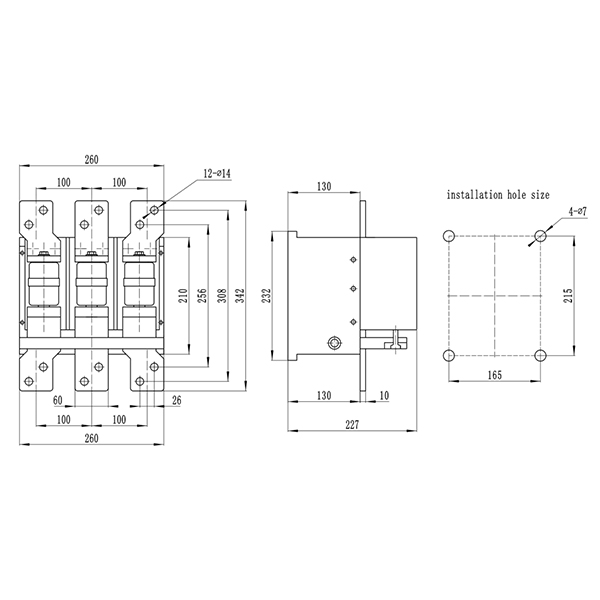When it comes to controlling medium and high power motors, choosing the right switching component directly affects equipment performance and operational safety. Many users wonder whether AC Contactor is the optimal option for such scenarios. This article will clarify this question through practical analysis of motor control needs and component characteristics.

To judge if a component is suitable, we first need to understand the core requirements of medium and high power motor control, which mainly focus on three aspects:
Medium and high power motors generate much higher inrush current at startup than their rated current—sometimes 5 to 7 times higher. The control component must withstand this instantaneous load without damage to avoid startup failures.
These motors often run continuously for hours or even days. The component needs stable contact performance to maintain circuit continuity, preventing unexpected disconnections caused by heat or vibration.
Overload or phase loss may occur during operation. The control component should either have built-in protection functions or work seamlessly with protective devices to cut off power quickly and protect the motor.
In most conventional medium and high power motor control scenarios, AC Contactor is indeed a preferred choice, mainly due to its alignment with the above core requirements:
Its contact system uses materials with high electrical conductivity and wear resistance, which can withstand the impact of large inrush current during motor startup. This avoids contact welding or burnout that might happen with ordinary switches.
AC Contactor adopts electromagnetic drive, which has simple structure and reliable operation. It generates less heat during long-term use and can maintain stable contact under normal operating conditions, reducing the risk of unexpected shutdowns.
While it may not have independent overload protection, it can be easily matched with thermal relays, circuit breakers and other protective devices. This combination forms a complete protection chain, responding promptly to overloads or faults to protect the motor.
AC Contactor is excellent for most cases, but it is not a one-size-fits-all solution. There are scenarios where other components are more suitable:
When motor power exceeds 1000kW or the system voltage reaches extra-high levels, the arc generated when AC Contactor disconnects may be difficult to extinguish quickly, increasing safety risks. At this point, vacuum contactors or SF6 contactors are more appropriate.
If the motor needs frequent speed adjustments (such as in variable frequency drive systems), AC Contactor can only achieve on-off control and cannot meet speed regulation needs. Variable frequency drives (VFDs) with built-in switching functions are better choices here.
In harsh industrial environments where short circuits occur occasionally, AC Contactor's arc-extinguishing capacity may be insufficient. Circuit breakers with arc-extinguishing chambers are more reliable in such cases.
AC Contactor is generally the first choice for medium and high power motor control in conventional scenarios. Its ability to withstand inrush current, stable long-term operation, and flexible compatibility with protection systems make it meet most practical needs. However, it is not universal—ultra-high power, precise speed regulation, or harsh fault-prone environments may require alternative components.
If you are looking for AC Contactor suitable for medium and high power motor control, or need to confirm the most appropriate control solution for your equipment, you can visit our product page. We provide a range of components tailored to different motor power levels, supporting your equipment's stable operation.